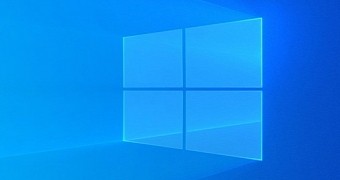A new feature update is just around the corner, as Microsoft is expected to finalize the development of Windows 10 19H2 sometime this month.
In other words, we’re only a few days away from the moment the RTM build is signed off, with Microsoft then focusing exclusively on last-minute polishing ahead of the public launch.
As per the typical release schedule, Windows 10 19H2 is expected to ship to production devices beginning with October.
Windows 10 19H2 won’t be a major release, but a rather light one, as Microsoft will focus mostly on under-the-hood improvements and only minor additions here and there. But still, it’ll be a recommended update for all devices on Windows 10.
Judging from the list of system requirements, all systems already running Windows 10 May 2019 Update should be able to run Windows 10 19H2 just smoothly, as there’s no difference in this regard.
And this makes total sense. Given that Windows 10 19H2 doesn’t bring a significant number of new features, there’s no point in raising system requirements – such changes typically take place when new features that are heavier on system resources are added to feature updates.
In other words, the Windows 10 version 19H2, or version 1909, the system requirements are the following:
| Processor: 1 gigahertz (GHz) or faster processor or SoC RAM: 1 gigabyte (GB) for 32-bit or 2 GB for 64-bit Hard disk space: 32 GB for both 64-bit and 32-bit OS Graphics card: DirectX 9 or later Display resolution: 800 x 600, a minimum diagonal display size for the primary display of 7-inches or larger |
Is my Windows 7 PC able to run Windows 10 19H2?
Windows 7 will reach the end of support on January 14, 2020, and Microsoft is now encouraging users to upgrade to Windows 10 before the time comes, thus making sure their devices continue getting security updates.
Because Windows 10 19H2 will be the current release when Windows 7 is pulled, many users will wonder whether their devices can run this latest version of Windows 10 or not. In theory, pretty much all Windows 7 computers should be able to run Windows 10 19H2 smoothly, as there are only small changes in system requirements.
These are the hardware requirements for Windows 7:
| Processor : 1 gigahertz (GHz) or faster 32-bit (x86) or 64-bit (x64) processor RAM: 1 gigabyte (GB) RAM (32-bit) or 2 GB RAM (64-bit) Hard disk space: 16 GB available hard disk space (32-bit) or 20 GB (64-bit) Graphics card: DirectX 9 graphics device with WDDM 1.0 or higher driver |
Of course, if you want to take full advantage of Windows 10’s capabilities you’re going to need new hardware, such as a dedicated camera that works with Windows Hello for biometric authentication. Additionally, a touchscreen is required for touch input, and Windows Ink requires a stylus.
Microsoft hasn’t yet shared the release date of Windows 10 19H2, but it shouldn’t take too long before the go-ahead is given for the rollout to production devices.

 14 DAY TRIAL //
14 DAY TRIAL //